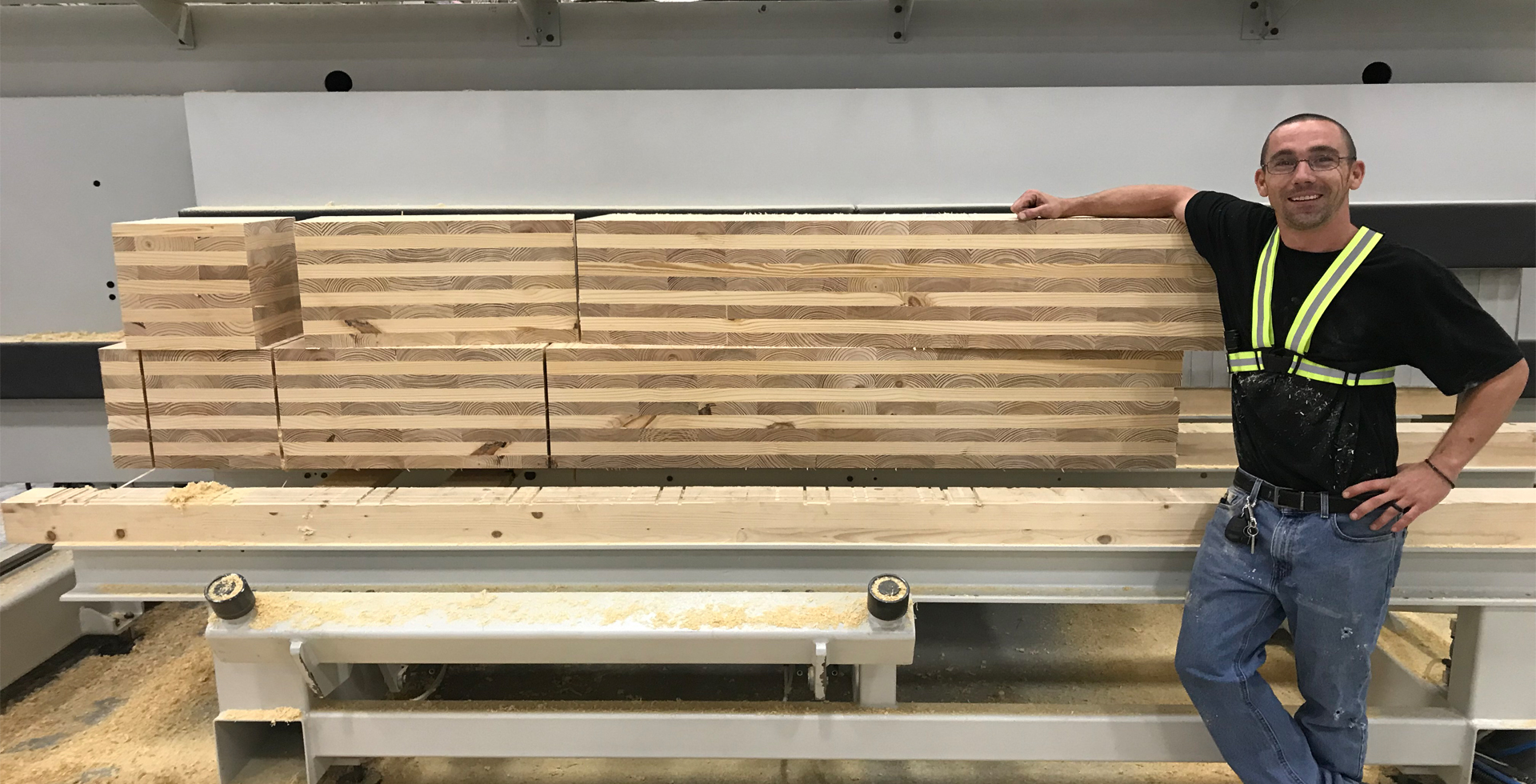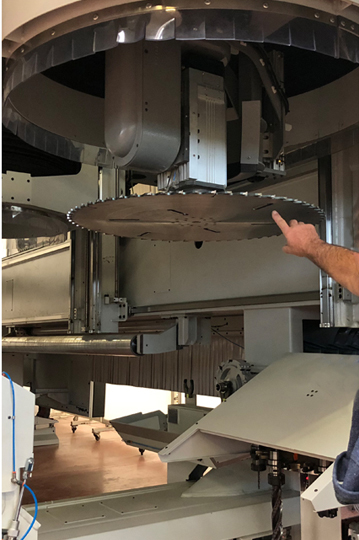A Solid Foundation
International Beams is the only manufacturer building architectural and structural CLT with Southern yellow pine, the largest wood fiber source in the U.S. They have been manufacturing engineered wood products for over 20 years.
Simplificamos el proceso de fabricación para sacar a relucir el potencial de cualquier material.
A Solid Foundation
International Beams is the only manufacturer building architectural and structural CLT with Southern yellow pine, the largest wood fiber source in the U.S. They have been manufacturing engineered wood products for over 20 years.
When International Beams opened its new IB XLAM USA Mass Timber Solutions Complex in mid-2018, it made history as the first cross-laminated-timber (CLT) manufacturing facility in the Eastern U.S. In the months since, the plant and its innovative E MIX processing center from Biesse/Uniteam has enabled International Beams (IB) to prepare to produce mass quantities of IB MAX-CORE CLT, breaking new ground by using fast-growing Southern yellow pine lumber as its primary raw material. The new Dothan, Alabama facility, strategically located in a region known for sustainably managed pine forests, has made IB a recognized leader in bringing the many advantages of building with CLT to North America.
CLT has been long been used to build multi-level structures in Europe, outperforming conventional materials like concrete and steel. “CLT has been in production in Europe for more than 20 years, so it has a proven track record,” said David Catta, International Beams’ Manager of Product Development, Quality Assurance and R&D. “By working with Biesse/Uniteam, we have succeeded in introducing construction technology that can generate 4-to-5 times as much production and transforming what was a boutique product into a true mass production product in North America. From the start, what I liked best was Biesse’s innovation—you can see the advances in thought and technology directly from one machine to the next,” Catta said. “They were very active in helping us get this very promising business started, and as a result, our work together feels more like a partnership than a client relationship.”
Immediate Advantages
CLT panels are used in multi-story construction for both light commercial and multi-family residential applications. Catta gives an example of why CLT is a perfect alternative to building a hotel with a stick frame. “Instead of needing 20 guys on site to do framing, you need only a few, because CLT builds like Legos, with no drilling or cutting,” he said. “That means CLT helps solve a major builder challenge -- current labor shortages that contribute to higher prices and more difficult investment financing.”
IB X-LAM USA Senior Product Engineer Steve Lieberman says there are also transportation and site storage advantages. “CLT is very heavy to move around and bringing it from Europe has always been time consuming and expensive. But now our Dothan plant is only a two-day drive from over 70 percent of the U.S. population. For anyone located east of the Rockies, we have a very competitive advantage in transportation costs. If you have a project in Atlanta, with no site storage, you want the trucks to just pull in as you need your CLT. As you can imagine coordinating such timely delivery from Austria creates a logistics nightmare.”
Lieberman says having a Biesse/Uniteam E MIX processing center makes all the difference in the world in operations from panel sizing to joint and window processing, drilling operations, pocketing and corner cleaning, all to achieve flawless quality. “We simply could not be in this business without their CNC technology, especially since it is fully integrated with our design software. We can just put specifications into a 3-dimensional building model and export them through the DDX.”

Long-Term Advantages
“Statistics estimate that 30 percent of greenhouse gases are caused by the construction industry,” Lieberman said, “but wood is a sustainable building material that stores carbon through carbon sequestration. Steel and concrete generate a large amount of carbon instead of storing it like wood. Over the life of a tree, just one cubic meter of wood material can store one ton of greenhouse gases. When that wood goes into a building, it’s sequestered for the long term.” Reducing the source of CLT from Europe, Canada or the Pacific Northwest to Alabama also dramatically reduces the carbon footprint of transportation.
Growing Opportunity
Lieberman says an 18 percent annual growth rate is expected in CLT, and it could well go higher as engineers and builders learn about and get comfortable with CLT. “We’re also fully expecting a code change that will make a huge difference. Right now in the U.S., wood can only be used on buildings that are five stories maximum. But CLT and mass timber become more cost effective when you get over five stories. If code approval goes through, CLT might be able to go up to 18 or 20 stories.”
“The American market has been watching this technology for the past five years, but now our new manufacturing facility has made people much more likely to go forward with it,” Catta said. “The demand is so high in Europe that they can no longer send their CLT to North America. In the past three years, the industry has quadrupled, and in the next two years, it will double again. The market for this product will grow consistently for the next 20 years, and with Biesse/Uniteam’s help, International Beams has the strength and resources to support ongoing market growth.”
From the start, what I liked best was Biesse’s innovation—you can see the advances in thought and technology directly from one machine to the next.
